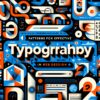The Benefits of SVGs in Modern Web Design

If you’ve ever tried to design a website, you know the struggle is real – from deciphering alien coding languages to timely battles with Resident Evil zombies called bugs. But fear not, brave web design padawan! Today we bring good news in the form of SVG.
/ H2 title /
Embrace the Power of SVG
Keyword Alert: SVG. Not to be confused with SVU (Special Victims Unit), SVG stands for Scalable Vector Graphics. No, it’s not a new gaming console, but for a web designer, it’s just as cool. Having SVG in your design tool belt can help you to achieve clean, responsive, and glitch-free designs.
/ H3 title /
Tells Pixels Where to Go – Responsively
If you’ve ever tried resizing an image only to be met with a pixelated disaster, you’ve just encountered a case of image meltdown. Fortunately, SVG is here to save the day. SVG images tell the pixels exactly where to go, turning a pile of visual rubble into a masterpiece fit for display on any screen size, including Uncle Bob’s antique desktop or your cousin’s brand-new, shiny iPhone 12.
/ H3 title /
Light As a Feather, Smooth As Silk
Ever stared at a screen, waiting for an image to load? You’d solve world hunger before that site decides to display its first image! SVGs, though, are light as a feather. The complete SVG code for an image often amounts to less space than typical image formats like JPEGs or PNGs. That means faster loading times and smoother scrolling experiences. You may even see tumbleweeds roll across the screen, because the old days of waiting are over!
/ H2 title /
Color Outside the Lines with SVG
SVGs aren’t just structurally superior; they come with a box of crayons too!
/ H3 title /
Luscious, Customizable Colors
Unlike flat, uneditable JPEGs or PNGs, SVGs boast the ability to change colors on the fly. That means if you suddenly decide your logo should match your favorite pair of socks, it’s entirely within the realm of possibility. No recoding, no image editing – just pure, color-changing magic at your fingertips.
/ H2 title /
SVG Stands for Super Versatile Graphic
Silent guardian, watchful protector, SVG. What doesn’t it do? Now that you’re acquainted with the benefits of SVGs in modern web design, it’s time to start implementing this ninja in your design process.
To get started, simply open your text editor and create a new .svg file. Then, you can input your SVG code that you can find online or even create yourself if you’re feeling adventurous.
Happy coding, and remember – in the battle of web design, SVG is your secret weapon! Remember this lesson, young padawan, and may the codes be with you.


